By Jordan Fleguel
It’s 7:45 a.m., and Lilibet is galloping. The bright morning sun just broke over the horizon, giving new shine to her deep brown hair. Dirt flies behind her as she picks up speed. Breath escapes her nostrils in small clouds that hang in the cold morning air.
The dull hum of a plane’s engine becomes louder as it passes overhead on its way to the nearby Pearson International Airport.
Lilibet is at Woodbine Racetrack, training for what she was born to do: race.
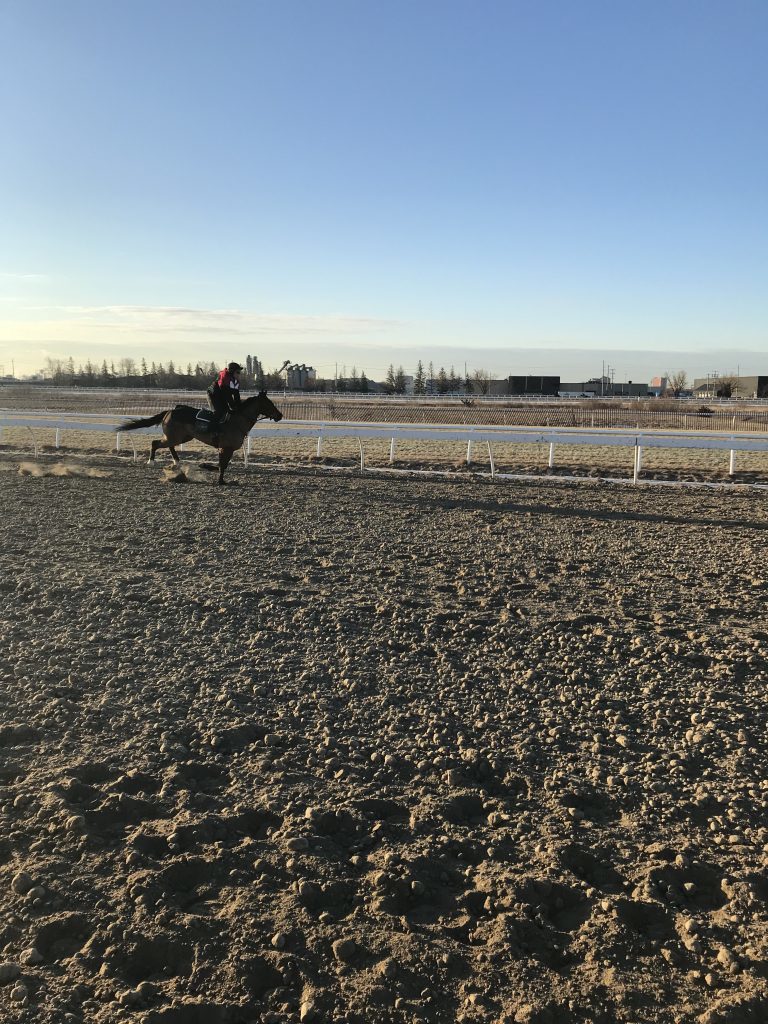
Woodbine Racetrack in Etobicoke is home to Ontario’s premier thoroughbred horse races. The massive grandstand is visible from a distance as you approach from the busy Rexdale Boulevard. The races are a popular entertainment destination during the summer months, but housing over 1, 200 horses and keeping them ready to race is no simple matter.
Woodbine’s stables, known as the backstretch, are home to a community of horses and their trainers who keep everything running smoothly behind the scenes.
From the outside, it may seem like a working relationship between caretaker and animal, but the bond between the horses and their trainers at Woodbine’s backstretch is nothing less than family.
Like many families, horses and trainers have a morning routine.
It starts early.
Trainers arrive at the barns no later than 7:00 a.m.
All stop signs in the area have a square white sign beneath them that stipulates: “Horses have the right of way.”
Lilibet, the filly – meaning a female horse under the age of four – gets anxious in the mornings, so she’s always tended to first.
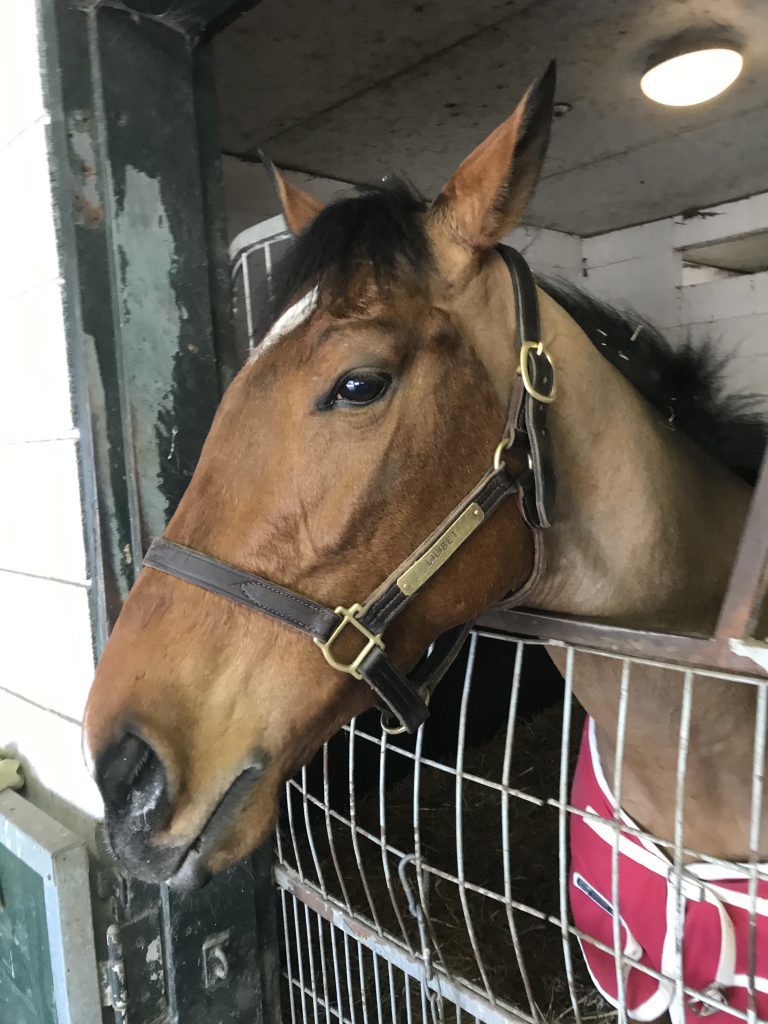
Ralph DiMarco, an assistant trainer, puts a saddle on Lilibet, and when Dennis Leclerc, the gallop boy, is mounted onto her back, they exit the barn, and Ralph’s work really begins.
Now is the time for shoveling shit.
Although, what Ralph uses looks a lot more like a rake than a shovel. The idea is to save as much of the good straw as you can, but since Lilibet’s stall only gets cleaned once a day, much of it needs to be tossed.
Meanwhile, Dennis rides Lilibet to the mile-long practice track a short walk from the barn.
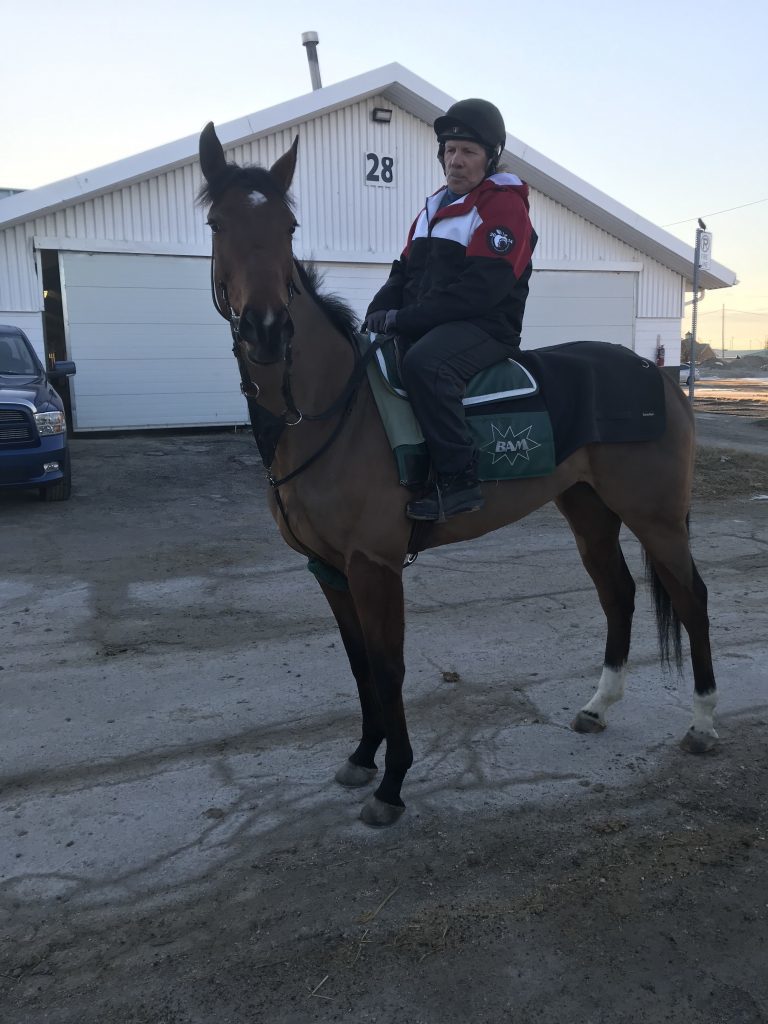
The practice track is a social place, where trainers like to gather, chat, and watch their horses gallop. Many hold stopwatches in their hands, seeing the pace at which their horses are moving.
Trainers are the sole caretakers of the horses at Woodbine. Trainers hire exercise riders (known as gallop boys) and any other workers they need in order to feed, exercise, and look-after their horses. Trainers are hired by each horse’s owner, and are paid a flat fee, per horse, per day.
Lilibet starts with a trot, and slowly works up to a gallop. Soon she’s tearing across the track, moving at close to top speed. All four of her legs leave the ground together with each long stride. After two laps, she begins to slow down again. When she’s finally brought back to a trotting pace, she’s sweating, and snorting after the intense workout.
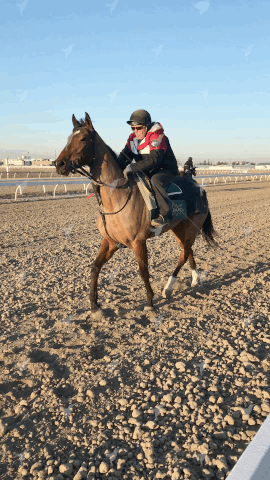
Lilibet and her gallop boy Dennis Leclerc at the Woodbine practice track on March 18, 2019. (RSJ/Jordan Fleguel)
As the summer racing season approaches, her workouts will slowly become more intense, and she’ll spend more time outdoors. For now, though, it’s back to the barn where she will be walked and given water in order to cool down.
Back in her stall, which is now clean thanks to Ralph’s hard work, she lays down and begins violently shifting her head from one side to the other, her back to the ground. She twists and turns, groaning and exhaling, while straw flies into the air with each movement. After galloping she wants nothing more than to lay down like this and scratch her back, side, and neck, while stretching her legs. She stands up.
Now, she can rest.
She’s given a small dose of tranquilizer to keep her mellow for the rest of the morning, and the only task left for her to complete is to eat lunch. She is fed a mix of corn, oats, molasses, protein supplements and some flax.
Most horses love peppermints, but Lilibet isn’t a fan, so any attempts to give her one as a treat will go awry. She will be fed dinner in her stall at around 4 p.m., but her work is done. She will wait until it all happens again the next morning.
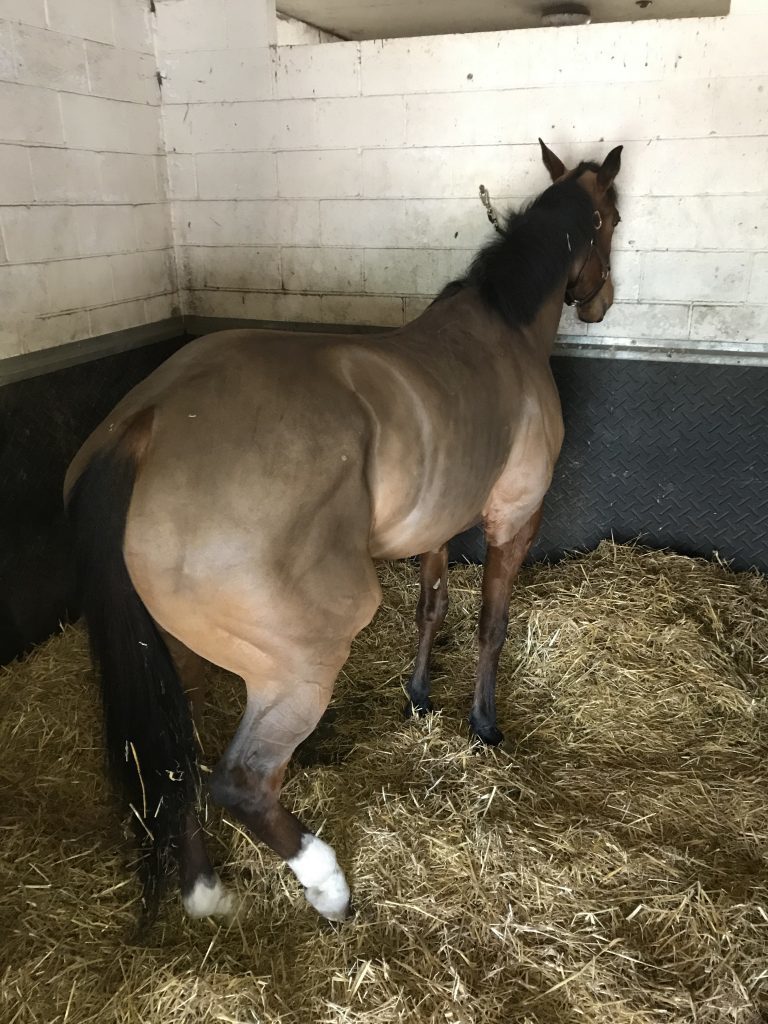
Ralph’s schedule revolves around the horses, so once they are exercised and fed, he’s done for the day. A trainer’s role as caretaker, however, is a 24-hour job.
This was made devastatingly clear on August 2, 2002 – a day that Ralph, and anyone who worked at Woodbine at the time, will never forget.
In the summer of 2002, Ralph worked at Woodbine with his girlfriend. He’s spent most of his life working at the backstretch; his father was a trainer as well.
After an average day of work, Ralph was woken up at 2:15 a.m. by a phone call from his gallop boy.
“The barn is on fire,” said the gallop boy.
It’s the last thing that Ralph, or anyone who works with horses, ever wants to hear.
Ralph, his girlfriend and his father made it to the track within minutes of the call, but police weren’t letting anyone into the barn area. Ralph and his girlfriend got out of the car and began to run. Ralph’s father ignored the police and drove towards the barns himself, almost running over a few officers in the process.
The scene was Ralph’s worst nightmare. He asked his gallop boy if he had let the horses out of their stalls. He said that he had.
Ralph then remembered something that is only learned after years of working with horses.
If a horse is let out of their stall when it’s in danger, it will always run back in – because that’s where it believes it will be safe. The stall door must be closed behind the horse so that they can’t get back in. Ralph’s gallop boy hadn’t closed the stall doors behind the horses, he didn’t know that he had to.
Ralph realized that most of his horses were still inside the barn, which was now completely consumed by flames.
In total, 34 horses died in the blaze.
Now, years later, the backstretch barns have sprinkler systems and tougher regulations when it comes to fire safety. There hasn’t been a major fire since. The cause was officially found to be arson, though no one was ever charged with the crime. It was one of the worst nights of Ralph’s life.
Ralph has spent most of his life around the horses at Woodbine. To him, they’re more than investments or money-making athletes. He’s at the backstretch bright and early every single day. Trainers have very few days off during racing season, often going weeks at a time without one.
Lilibet knows Ralph well, and always expects him.
The bond they share is strong.
“They’re like our babies,” Ralph says.
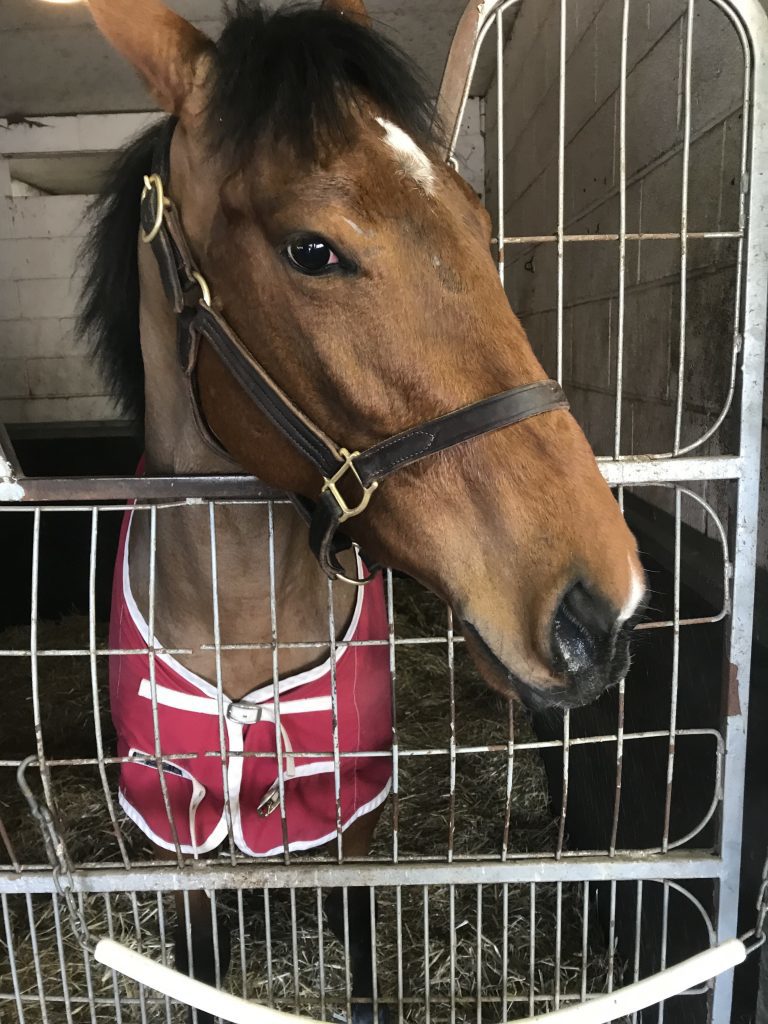
Below, you’ll hear the voice of Jessica Buckley, President of Woodbine, Mohawk Park, explaining what a first-time guest to Woodbine Racetrack can expect from the experience, along with the track’s history.
